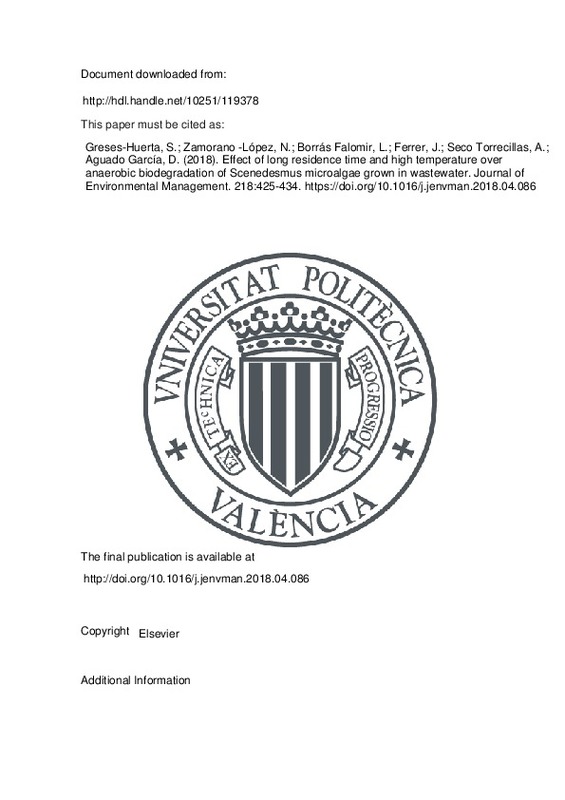JavaScript is disabled for your browser. Some features of this site may not work without it.
Buscar en RiuNet
Listar
Mi cuenta
Estadísticas
Ayuda RiuNet
Admin. UPV
Effect of long residence time and high temperature over anaerobic biodegradation of Scenedesmus microalgae grown in wastewater
Mostrar el registro completo del ítem
Greses-Huerta, S.; Zamorano -López, N.; Borrás Falomir, L.; Ferrer, J.; Seco Torrecillas, A.; Aguado García, D. (2018). Effect of long residence time and high temperature over anaerobic biodegradation of Scenedesmus microalgae grown in wastewater. Journal of Environmental Management. 218:425-434. https://doi.org/10.1016/j.jenvman.2018.04.086
Por favor, use este identificador para citar o enlazar este ítem: http://hdl.handle.net/10251/119378
Ficheros en el ítem
Metadatos del ítem
| Título: | Effect of long residence time and high temperature over anaerobic biodegradation of Scenedesmus microalgae grown in wastewater | |
| Autor: | Greses-Huerta, Silvia Zamorano -López, Núria Borrás Falomir, Luis Seco Torrecillas, Aurora | |
| Entidad UPV: |
|
|
| Fecha difusión: |
|
|
| Resumen: |
[EN] Anaerobic digestion of indigenous Scenedesmus spp. microalgae was studied in continuous lab-scale anaerobic reactors at different temperatures (35 degrees C and 55 degrees C), and sludge retention time - SRT (50 and ...[+]
|
|
| Palabras clave: |
|
|
| Derechos de uso: | Reconocimiento - No comercial - Sin obra derivada (by-nc-nd) | |
| Fuente: |
|
|
| DOI: |
|
|
| Editorial: |
|
|
| Versión del editor: | http://doi.org/10.1016/j.jenvman.2018.04.086 | |
| Código del Proyecto: |
|
|
| Agradecimientos: |
This research work has been supported by the Spanish Ministry of Economy and Competitiveness (MINECO, Project CTM2011-28595-C02-01/02) jointly with the European Regional Development Fund (ERDF), which are gratefully ...[+]
|
|
| Tipo: |
|







![[Cerrado]](/themes/UPV/images/candado.png)


